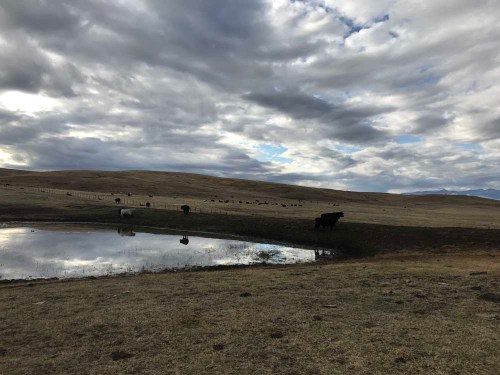Wallowa producers adapt to drought, heat
Published 9:40 am Friday, October 22, 2021

- Cattle grazed under drought conditions this summer in Wallowa County’s Zumwalt Prairie.
ENTERPRISE — This spring and summer’s hot temperatures and lack of moisture hurt Wallowa County farmers and ranchers and pushed them into adapting how they manage their operations.
The northeasternmost part of Oregon is home to four free-flowing rivers that originate in the Wallowa Mountains and wind their way to the Grande Ronde and Snake rivers. Wallowa County farmers depend on two of those rivers in particular for irrigation, the Wallowa and the Lostine.
The east and west forks of the Wallowa River drain into the five-mile long, 300-foot-deep Wallowa Lake. A dam regulates its outflow for irrigation and flood control.
The dam is owned and managed by the Wallowa Lake Irrigation District. Board member Joe Dawson said water restrictions were rolled out in July to the district’s water users in order to eke out enough irrigation water for the summer growing season.
“The board decided the gallons per acre rate and our ditch manager and board members did a really good job communicating with farmers about what size nozzles to use on their wheel lines and at what PSI (pounds per square inch) to set their pumps,” Dawson said.
While a lot of the communication was direct, the board also updated its website, www.wlid.org, every week. Under the “Announcements” tab are charts outlining the gallons per minute for single and dual nozzles, nozzle sizes and PSI limits.
“Farmers were receptive and did a great job managing the water we had and we were able to irrigate throughout the whole season,” Dawson said.
The communication helped distribute the lake’s water efficiently, but it didn’t change the weather patterns, and Dawson said he believed all farmers had reduced yields.
“We had extreme temperatures, from hot to cold, a lot of wind and little rain in April and May,” Dawson said.
According to www.drought.gov, Wallowa County suffered its ninth driest year in the past 127 years, down 5.1 inches from normal. The entire county suffered severe drought in 2021 — pastures are brown; hay yields are down and prices are up; and ranchers are selling cattle they would normally keep. More than 83% of the county was under extreme drought. A sliver of the county, 1.43%, experienced the most severe distinction, exceptional drought.
As Wallowa County’s OSU Extension agent, Pete Schreder saw the impacts of drought and unusually intense heat on the county’s farmers and ranchers. While he won’t have any hard numbers until December or January, anecdotally, a large majority of producers suffered significantly lower yields.
“The general consensus is that the drought had an impact on our agricultural commodities,” Schreder said. “Because things dried out so quickly, we didn’t have the moisture to keep things going.”
While irrigated alfalfa might not have suffered too much, Schreder said grass hay that depended more on rainfall is down in terms of tonnage and is now selling for $200 a ton. He said grass forage also suffered, especially early in the season.
“Because it got hot so quickly, farmers got behind the water curve before their first cutting,” Schreder said.
The second cutting wasn’t quite as heavily affected, as irrigators normally are watering consistently in the middle of the summer.
“We expect higher temperatures and warmer days in July and the grass responded under irrigation,” Schreder said.
Dryland farming suffered significantly, relying on stored water in the soil and rainfall to grow grain crops in parts of the county without access to rivers and streams for irrigation.
As for the rangelands, where cattle graze for much of the summer, Schreder said the pastures dried out, reducing the amount of forage for livestock.
“We’ve seen producers feeding hay this year as early as September, which is unusual,” Schreder said.
For ranchers whose cattle graze public allotments managed by the U.S. Forest Service, Schreder said it was tough to keep cattle in their pastures as the grass desiccated.
The Lightning Creek Ranch on the Zumwalt Prairie, owned and managed by the Probert family, made some changes to adapt to this year’s heat and drought. Dan Probert said they started with fewer head of cattle this spring than usual. To compensate for stunted grass growth he said they were able to find some pasture for part of the herd with a neighboring ranch.
This year had a big impact on the Probert’s herd overall, Probert said.
“We shipped cull cattle earlier than we usually do and our plan is to stock with half our historical numbers next year to let things recover,” he said.
For the past decade Wallowa County suffered less severe drought conditions than most of the rest of the state and even this year fared better than counties such as Malheur, Harney, Lake and Klamath. Southern Oregon had the trifecta of heat, drastically reduced water supplies and the 413,765-acre Bootleg Fire, the third-largest fire in the state since 1900.
“When you see what’s happened in southern Oregon, you come back feeling ashamed you are complaining,” Schreder said. “It is indicative of the fact we are off of our norms and we need a really good winter and spring to kick us back on the positive side of things.”








